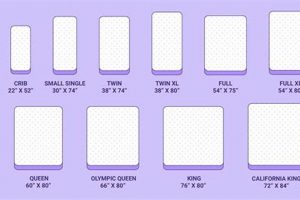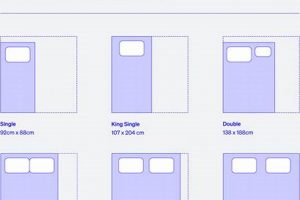The specific dimensions of bedding designed for recreational vehicles, often called “RV” mattresses, can differ from standard residential mattress sizes. One common variant is a shorter length queen mattress, tailored to fit the more compact sleeping areas typical in RVs. For example, a standard queen mattress measures 60 inches wide by 80 inches long, while an RV version might retain the 60-inch width but reduce the length to approximately 75 inches or even 72 inches.
This dimensional adaptation is important because it optimizes space utilization within the limited confines of an RV. Maintaining a comfortable sleeping surface without unduly encroaching upon valuable living or storage space is a key consideration in RV design. Historically, manufacturers have offered a range of modified mattress sizes to address this need, evolving alongside the increasing demand for comfortable amenities within mobile living spaces.
Understanding the dimensions and characteristics of mattresses intended for RV use is crucial when selecting replacement bedding or designing custom sleeping arrangements. This article will explore factors influencing selection, common dimensions, materials, and other considerations relevant to making informed choices about RV mattresses.
Considerations for Selecting a Properly Sized RV Mattress
Choosing the appropriate mattress dimensions for a recreational vehicle necessitates careful evaluation. The following tips provide guidance on this selection process.
Tip 1: Measure the Available Space Accurately: Precise measurement of the RV’s sleeping area is critical. Account for any obstructions or irregular shapes that might impact mattress fit. Consider the clearance required for opening doors or accessing storage compartments.
Tip 2: Prioritize Comfort and Support: While size is a primary constraint, comfort should not be sacrificed. Evaluate mattress materials and construction to ensure adequate support for the user’s weight and sleeping preferences. Explore options such as memory foam, innerspring, or hybrid designs.
Tip 3: Account for Bedding Compatibility: Determine whether standard-sized bedding will fit the selected mattress. If not, plan to source custom-sized sheets, blankets, and mattress protectors. Availability and cost of such items should be factored into the decision.
Tip 4: Assess Mattress Weight: Excessive weight can impact the RV’s fuel efficiency and handling. Research the weight specifications of different mattress types and choose a lightweight option without compromising comfort or durability.
Tip 5: Investigate Mattress Thickness: Thickness influences both comfort and available headroom. Consider the overall height of the mattress and foundation (if applicable) to ensure sufficient space for sitting upright in bed.
Tip 6: Review Warranty and Return Policies: Before making a purchase, carefully review the mattress manufacturer’s warranty and return policies. This will provide recourse in case of defects or dissatisfaction with the product’s performance.
Tip 7: Consider Air Circulation: Adequate airflow around the mattress prevents moisture buildup and mold growth. Opt for mattresses with breathable materials or consider using a ventilated mattress foundation.
Prioritizing these considerations ensures the selection of an RV mattress that optimizes comfort, functionality, and space utilization. The aim is to maximize the enjoyment of the recreational vehicle experience.
The subsequent sections will address specific material options and installation considerations for RV mattresses.
1. Width
The dimension of “Width: Sixty Inches” is a defining characteristic directly associated with the designation “short queen rv mattress size.” This specification dictates the lateral extent of the sleeping surface, influencing comfort and compatibility within the confined space of a recreational vehicle.
- Standardization and Accommodation
The consistent width of sixty inches allows manufacturers to produce mattresses that align with established bed frame and bedding dimensions. This standardization facilitates easier procurement of compatible sheets, blankets, and mattress protectors, thereby simplifying the consumer’s purchasing process and reducing the need for custom-made items. However, the “short” aspect of the mattress necessitates attention to the length of such items.
- Space Optimization in RVs
While the width is maintained at sixty inches, the reduced length of the “short queen” configuration (typically 75 inches) results in a significant reduction in overall mattress area. This is crucial in RVs, where every inch of space contributes to maneuverability and storage capacity. The retained width ensures a comfortable sleeping area for two occupants, while the reduced length minimizes obstruction within the vehicle.
- Impact on Sleeper Comfort
The sixty-inch width provides adequate lateral space for two adults to sleep comfortably, assuming average body size. Reductions in width would compromise sleeping comfort and increase the likelihood of contact between occupants during the night. The established width, therefore, balances space constraints with the need to provide a reasonable level of comfort.
- Manufacturing and Cost Considerations
Maintaining the standard queen width simplifies the manufacturing process, allowing manufacturers to leverage existing tooling and production lines. This can translate into lower production costs, which may be reflected in the final retail price. Deviating from this standard width would necessitate specialized manufacturing processes, potentially increasing costs and limiting product availability.
The established width of sixty inches is a critical element of the “short queen rv mattress size,” influencing comfort, manufacturing costs, and space utilization. Its standardization provides both benefits and constraints, shaping the design and functionality of mattresses intended for recreational vehicles.
2. Length
The “Length: Seventy-Five Inches” specification forms a cornerstone of the “short queen rv mattress size,” distinguishing it from a standard queen mattress. This dimensional alteration addresses the unique spatial constraints inherent in recreational vehicles, directly influencing interior layout and user comfort.
- RV Floor Plan Optimization
The reduced length of 75 inches, in contrast to the standard queen’s 80 inches, allows RV designers to maximize usable floor space. This seemingly small difference yields significant gains, enabling the inclusion of additional storage compartments, wider walkways, or larger seating areas. The “short queen rv mattress size” therefore facilitates more versatile and functional RV floor plans.
- Maneuverability Enhancement
Within the confines of an RV, inches can impact maneuverability. A shorter mattress allows for greater ease of movement around the bed, particularly in tighter layouts. This is especially relevant for accessing closets, bathrooms, or other areas adjacent to the sleeping area. The “short queen rv mattress size” contributes to a more fluid and less constricted living environment.
- Weight Distribution Considerations
A shorter mattress translates to a slight reduction in overall weight. While the difference may be marginal, it contributes to the vehicle’s overall weight distribution profile. This can be a relevant factor, particularly when considering the vehicle’s payload capacity and its impact on fuel efficiency. The “short queen rv mattress size,” in this context, plays a small but measurable role in vehicle performance.
- Impact on Sleep Quality
The reduction in length may impact individuals of above-average height. Those exceeding six feet in height may find the 75-inch length restrictive, potentially leading to discomfort or compromised sleep quality. Selecting the appropriate mattress length requires careful consideration of the user’s physical characteristics to ensure adequate support and comfort.
The “Length: Seventy-Five Inches” specification is not merely a dimensional aspect of the “short queen rv mattress size” but a critical design element that directly influences space optimization, maneuverability, and user comfort within the constraints of a recreational vehicle. RV buyers must carefully weigh the benefits of space savings against potential compromises in individual sleeping comfort to arrive at an informed decision.
3. Thickness Considerations
Mattress thickness represents a crucial design parameter intrinsically linked to the functionality and comfort of a “short queen rv mattress size.” The thickness influences factors ranging from headroom and overall weight to the effectiveness of support and pressure relief. Consequently, careful deliberation regarding this aspect is essential when selecting a mattress for a recreational vehicle.
Increased thickness generally correlates with enhanced comfort, achieved through the incorporation of additional cushioning layers and advanced support systems. However, this benefit is offset by potential drawbacks within the confined space of an RV. A thicker mattress reduces headroom, which can be problematic in RVs with low ceilings, and contributes to the overall weight of the vehicle, potentially impacting fuel efficiency. Conversely, insufficient thickness may result in inadequate support and pressure relief, leading to discomfort and potential musculoskeletal issues. An example of this trade-off is observed in pop-up campers, where maximizing headroom necessitates thinner mattresses, which often compromise sleep quality. In contrast, larger Class A RVs may accommodate thicker mattresses, allowing for greater comfort but requiring consideration of increased weight and storage space when the bed is not in use.
Therefore, determining the optimal mattress thickness for a “short queen rv mattress size” involves a comprehensive evaluation of the available space, weight limitations, and the occupant’s individual comfort preferences. A balanced approach is imperative to ensure both adequate support and usability within the confines of a recreational vehicle. Selecting a mattress with appropriate thickness is a key element of optimizing the sleeping experience in an RV, contributing significantly to the overall comfort and enjoyment of the mobile living environment.
4. Weight Restraints
Weight constraints are a critical consideration in the selection of a “short queen rv mattress size.” The overall weight of the mattress directly impacts the recreational vehicle’s fuel efficiency, handling, and adherence to safety regulations. Exceeding weight limits can compromise vehicle performance and structural integrity, necessitating a thorough understanding of weight considerations during mattress selection.
- Impact on Fuel Efficiency
Increased weight directly correlates with decreased fuel efficiency. A heavier mattress adds to the vehicle’s overall load, requiring more energy to propel it. Over time, this incremental increase in weight can result in significant fuel cost increases, particularly during extended travel. Selecting a lightweight “short queen rv mattress size” mitigates this effect, contributing to improved fuel economy.
- Effects on Vehicle Handling
Excessive weight can negatively influence the vehicle’s handling characteristics. Increased weight affects braking distance, stability during turns, and overall control. A heavier mattress, especially if combined with other weight-related factors, can make the RV more difficult to maneuver, particularly in adverse weather conditions or on challenging terrain. Choosing a lighter mattress improves handling and enhances driving safety.
- Compliance with Weight Regulations
Recreational vehicles are subject to weight regulations established by state and federal authorities. Exceeding these weight limits can result in fines, penalties, or even the impoundment of the vehicle. A “short queen rv mattress size” should be selected to ensure that the vehicle remains within its legal weight limits, even when fully loaded with passengers and cargo. Compliance with these regulations is paramount for safe and legal operation.
- Material Composition and Weight
Different mattress materials vary significantly in weight. Traditional innerspring mattresses tend to be heavier than memory foam or latex mattresses. The material composition of a “short queen rv mattress size” should be carefully evaluated to minimize weight without compromising comfort or support. Lightweight materials, such as high-density foam, offer a balance between weight reduction and sleeping surface quality.
Therefore, the selection of a “short queen rv mattress size” necessitates a careful assessment of weight constraints. Fuel efficiency, vehicle handling, regulatory compliance, and material composition all play a crucial role in determining the optimal mattress choice. Prioritizing weight considerations ensures safe and economical operation of the recreational vehicle, contributing to a more enjoyable and worry-free travel experience.
5. Custom Bedding Needs
The unique dimensions of a “short queen rv mattress size” necessitate careful consideration of bedding requirements. Standard queen-size sheets and blankets will not typically provide a proper fit, leading to excess fabric, potential discomfort, and aesthetic inconsistencies. This disparity highlights the need for custom or adapted bedding solutions.
- Sheet Sizing and Fit
Standard queen-size fitted sheets are designed for mattresses measuring 60 inches wide by 80 inches long. The “short queen rv mattress size,” with its reduced length of 75 inches, results in excess fabric at the foot of the bed. This excess can bunch up, causing discomfort during sleep and presenting a visually unappealing appearance. Custom-sized fitted sheets, tailored to the specific dimensions of the RV mattress, provide a snug and secure fit, minimizing discomfort and improving aesthetics. Similarly, flat sheets may require hemming to prevent excessive overhang.
- Blanket and Comforter Dimensions
Standard queen-size blankets and comforters are often too large for a “short queen rv mattress size.” The excess material can drape over the edges of the bed, interfering with movement and creating a cluttered appearance. Moreover, oversized bedding may be difficult to store within the limited storage space of an RV. Custom or appropriately sized blankets and comforters offer a more streamlined and functional solution. Manufacturers specializing in RV bedding often provide tailored options that address these spatial constraints.
- Mattress Protector Considerations
Mattress protectors safeguard the mattress from spills, stains, and allergens, extending its lifespan and maintaining hygiene. Standard queen-size mattress protectors, like sheets, will not fit snugly on a “short queen rv mattress size.” A loose-fitting protector can shift during sleep, compromising its protective function. Custom-sized mattress protectors ensure a secure fit, providing comprehensive protection without compromising comfort or functionality. Many RV-specific retailers offer protectors designed to accommodate the unique dimensions of RV mattresses.
- Pillowcase Proportions
While pillow sizes typically remain consistent regardless of mattress size, the overall aesthetic of the bed is influenced by the proportion of the pillowcases to the bedding. Overly large or improperly fitted sheets and blankets can make standard-size pillowcases appear disproportionate. Selecting bedding that is specifically designed for “short queen rv mattress size” helps maintain a cohesive and visually appealing appearance, ensuring that pillowcases complement the overall bed presentation.
In conclusion, addressing “Custom Bedding Needs” is paramount when outfitting a “short queen rv mattress size.” Standard bedding will invariably result in fit and aesthetic compromises. Investing in custom-sized or appropriately proportioned bedding solutions ensures optimal comfort, functionality, and visual appeal within the limited confines of a recreational vehicle. The availability of tailored options from specialized RV bedding retailers simplifies this process, allowing RV owners to create a comfortable and aesthetically pleasing sleeping environment.
6. Space Optimization
The “short queen rv mattress size” is intrinsically linked to the critical principle of space optimization within recreational vehicles. The reduced dimensions, particularly the shortened length, are a direct response to the limited interior volume characteristic of most RVs. This is not merely a matter of convenience but a fundamental design consideration impacting functionality, storage, and overall habitability. The selection of a smaller mattress, while potentially impacting sleeping space for taller individuals, allows for greater flexibility in floor plan design and the allocation of valuable space to other essential amenities.
The impact of the “short queen rv mattress size” on space optimization is readily apparent in real-world examples. Consider two RV models with identical external dimensions. One utilizes a standard queen-size mattress, while the other incorporates the “short queen” variant. The model with the shorter mattress will invariably offer either larger wardrobes, a more spacious bathroom, or a more generous seating area. Alternatively, it might allow for improved access around the bed, enhancing maneuverability within the confined space. The practical significance of this space-saving measure is that it directly influences the user’s experience, making the RV feel less cramped and more livable for extended periods.
In summary, the adoption of the “short queen rv mattress size” is a deliberate design choice predicated on the necessity of maximizing usable space within recreational vehicles. While potential compromises in sleeping space must be acknowledged, the benefits in terms of enhanced functionality, storage capacity, and overall habitability are substantial. Understanding the relationship between the mattress dimensions and space optimization is crucial for both RV manufacturers and consumers seeking to create a comfortable and practical mobile living environment. Challenges remain in providing adequate comfort for taller individuals, suggesting a need for further innovation in RV mattress design.
Frequently Asked Questions Regarding Short Queen RV Mattress Size
This section addresses common inquiries and clarifies misconceptions pertaining to the dimensions and application of short queen RV mattresses.
Question 1: What are the precise dimensions defining a short queen RV mattress size?
A short queen RV mattress typically measures 60 inches in width and 75 inches in length. The thickness can vary based on construction and materials but generally ranges from 6 to 12 inches.
Question 2: How does a short queen RV mattress size differ from a standard queen mattress?
The primary difference lies in the length. A standard queen mattress is 80 inches long, while a short queen is 75 inches long. The width of 60 inches remains consistent between the two.
Question 3: Why is a short queen RV mattress size employed in recreational vehicles?
The reduced length of the short queen configuration optimizes space within the limited confines of an RV. It allows for greater maneuverability and increased storage or living area compared to a standard queen-sized mattress.
Question 4: Is it necessary to purchase specialized bedding for a short queen RV mattress size?
Standard queen-size sheets will generally not fit correctly on a short queen mattress. Fitted sheets will have excess material, and flat sheets may be too large. It is recommended to purchase bedding specifically designed for short queen dimensions.
Question 5: What are the primary material options available for a short queen RV mattress size?
Common materials include innerspring, memory foam, latex, and hybrid constructions. The selection depends on individual comfort preferences and budget considerations.
Question 6: Can a short queen RV mattress size accommodate two adults comfortably?
The 60-inch width typically provides sufficient space for two adults of average build. However, individuals of larger size or those who prefer more personal space may find it less comfortable than a larger mattress.
The key takeaway is that the short queen RV mattress size represents a design compromise that prioritizes space utilization within the constraints of a recreational vehicle. Proper bedding and material selection are crucial for maximizing comfort.
The following section delves into the practical considerations for selecting the ideal short queen RV mattress based on individual needs and preferences.
Conclusion
The preceding examination of the “short queen rv mattress size” underscores its importance as a dimensional standard tailored for the spatial limitations of recreational vehicles. The balance between space optimization and sleeping comfort necessitates careful consideration of factors such as width, length, thickness, weight, and bedding requirements. Each of these aspects significantly impacts the usability and overall habitability of the RV.
While the “short queen rv mattress size” serves as a pragmatic solution for many RV owners, individual needs and preferences should ultimately guide the selection process. Continued innovation in mattress design and material science may yield further improvements in comfort and space utilization within the constraints of the RV environment. A thorough understanding of these factors is essential for making an informed decision and maximizing the enjoyment of the mobile living experience.


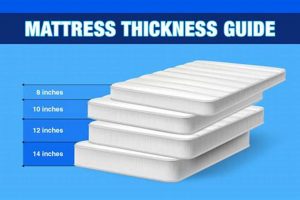
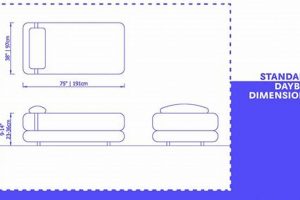
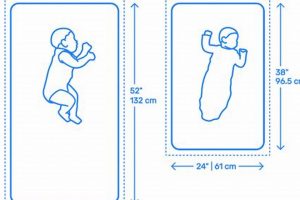
![[Guide] How to Tell Mattress Size: Dimensions & Guide Organic & Natural Mattress Buyer’s Guide: Non-Toxic Sleep Solutions [Guide] How to Tell Mattress Size: Dimensions & Guide | Organic & Natural Mattress Buyer’s Guide: Non-Toxic Sleep Solutions](https://mattressworldpa.com/wp-content/uploads/2025/07/th-2204-300x200.jpg)
